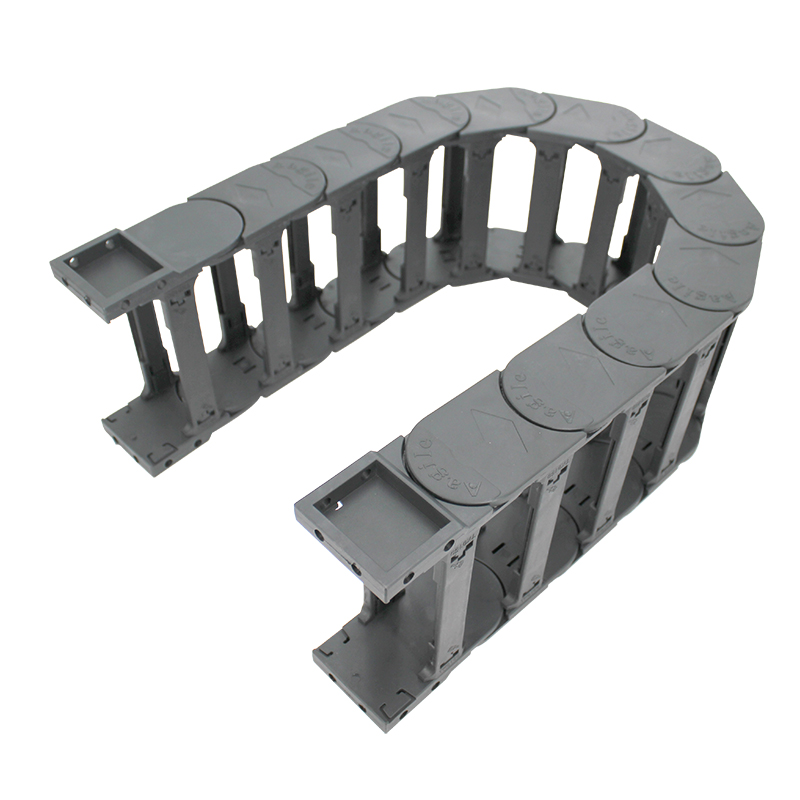small cable carrier
Understanding Small Cable Carriers Benefits, Applications, and Best Practices
In today's technologically advanced world, efficient management of cables is crucial across various industries, from manufacturing to telecommunications. One effective solution that has gained popularity is the use of small cable carriers. These innovative devices facilitate the organization, protection, and mobility of cables, ensuring that they operate smoothly in a myriad of applications. This article explores the benefits of small cable carriers, their applications, and best practices for selecting the right carrier for your needs.
What Are Small Cable Carriers?
Small cable carriers, also known as cable chains or drag chains, are systems designed to guide and protect flexible cables and hoses in motion. These carriers consist of interconnected links that form a flexible channel through which cables can be routed. They come in various sizes and designs, allowing for different cable capacities and bend radii, making them suitable for both light and heavy-duty applications.
Benefits of Small Cable Carriers
1. Organization and Protection Small cable carriers help eliminate cable clutter by providing a streamlined pathway for cables. This organization not only enhances the aesthetic appeal of workspaces but also reduces the risk of tangling, fraying, or accidental disconnection. By protecting cables from mechanical damage and abrasion, companies can extend the lifespan of their equipment.
2. Enhanced Mobility In dynamic environments where machines and equipment are in constant motion, small cable carriers enable unhindered movement. They allow for smooth transitions and minimal wear on cables, which is essential in robotic applications, CNC machines, and automated assembly lines.
3. Increased Safety Disorderly cables pose significant safety hazards, often leading to trip hazards or equipment malfunctions. Small cable carriers mitigate these risks by securing cables in place, reducing the likelihood of accidents and ensuring a safer working environment.
4. Versatility Small cable carriers are adaptable to a wide range of applications, including industrial machinery, laboratory equipment, conveyor systems, and more. They can accommodate various types of cables and hoses, such as electrical, hydraulic, and pneumatic lines, making them a versatile solution for different industries.
Applications of Small Cable Carriers
Small cable carriers are prevalent in numerous sectors, including
- Manufacturing In factories where machinery operates on tracks or linear guides, small cable carriers keep cable systems organized and prevent wear caused by movement over long distances.
small cable carrier

- Robotics Robotics applications demand precision and unrestricted motion. Small cable carriers provide the necessary flexibility and support for cables in robotic arms and mobile platforms.
- Aerospace and Automotive In the aerospace and automotive industries, where reliability and safety are paramount, small cable carriers help to manage cable systems efficiently while protecting them from the harsh conditions of the environment.
- Entertainment and Events Small cable carriers are often used in stage production, allowing cables to move freely without compromising performance or safety.
Best Practices for Selecting Small Cable Carriers
When choosing a small cable carrier, consider the following factors
1. Cable Capacity Evaluate the number and type of cables you need to manage. Ensure that the carrier can accommodate these cables without overcrowding, which could lead to wear and tear.
2. Bend Radius Different applications require carriers with varying bend radii. Ensure that the selected carrier is suitable for the space and movement requirements of your specific application.
3. Material Considerations Cable carriers come in a variety of materials, from plastic to metal. Select a material that is appropriate for your environment—consider factors like exposure to chemicals, temperature ranges, and weight requirements.
4. Assembly and Maintenance Opt for a system that can be easily assembled and maintained. Look for designs that allow for quick installation and adjustments, as well as easy access for maintenance purposes.
Conclusion
Small cable carriers play a vital role in streamlining cable management across various industries. They offer numerous benefits, including enhanced organization, mobility, and safety, making them indispensable in modern manufacturing and technological applications. By selecting the right small cable carrier and following best practices, businesses can optimize their operations, ensure safety, and prolong the life of their equipment. As technology continues to advance, the importance of effective cable management solutions like small cable carriers will only continue to grow.








